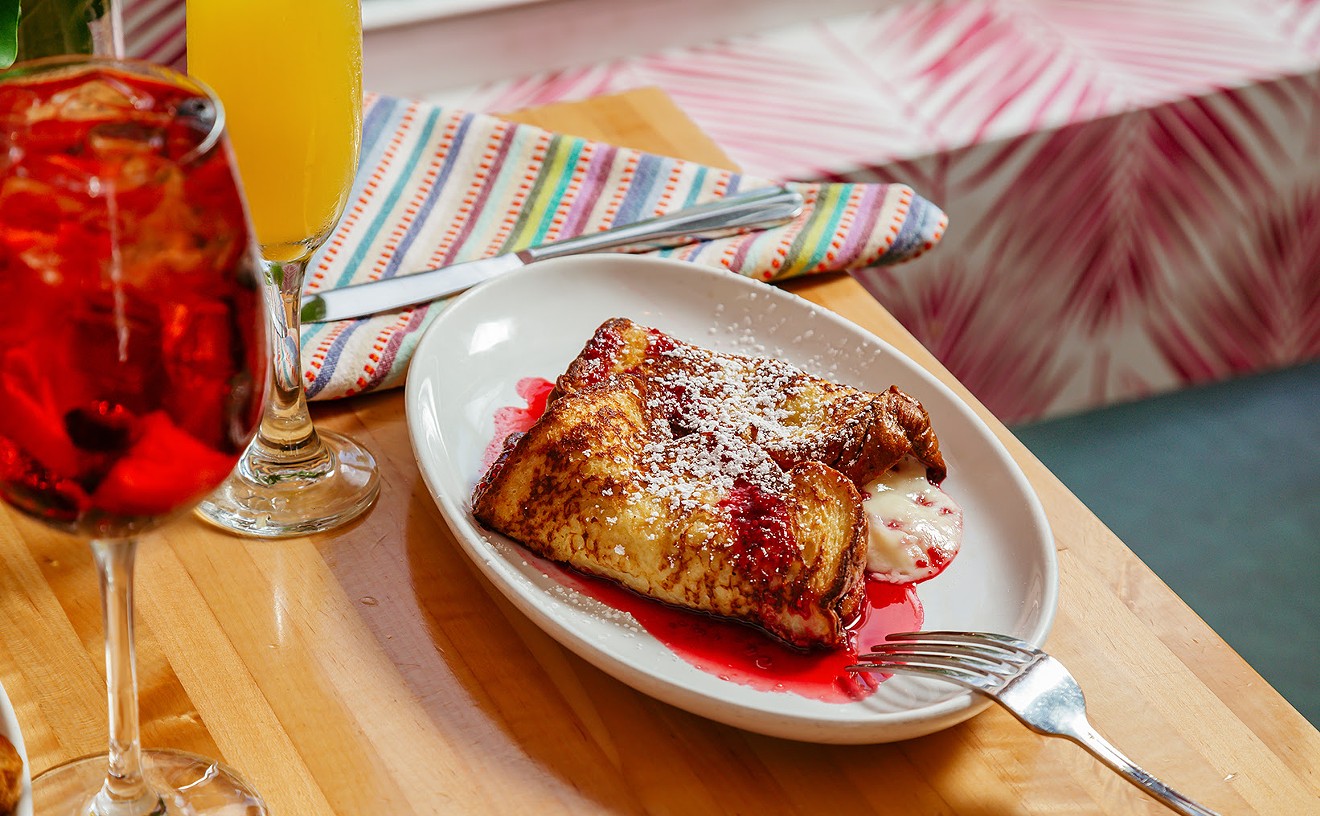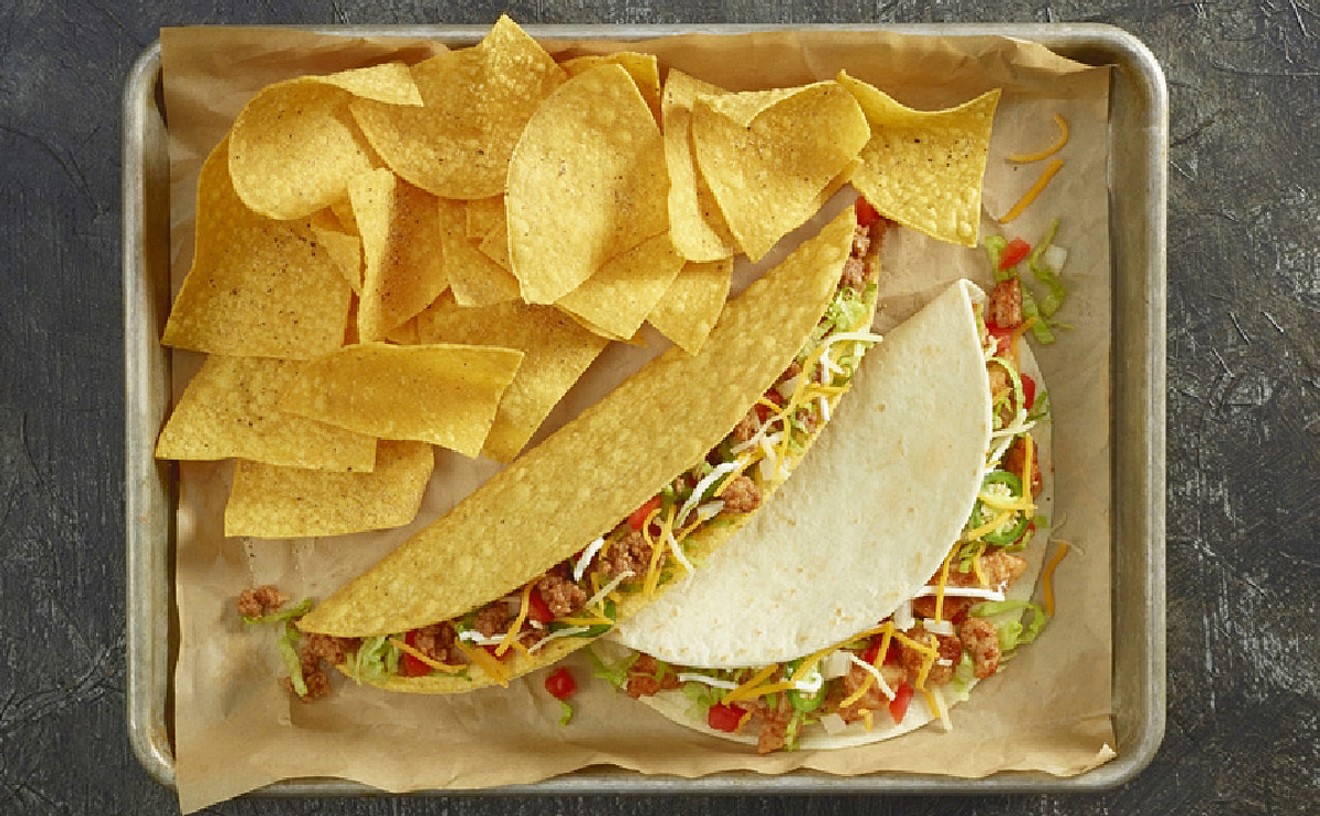If you're thinking it sounds a bit like "second verse, same as the first," you'd be right. This particular trend -- nibbling on smaller-size portions in succession, either by yourself or sharing with another person, much like exploring a tasting menu -- is, like bell-bottoms or animal-print clothing, one that every decade or so makes a very public return. Unlike bell-bottoms, however, the tapas comeback is actually welcome. I, for one, am tired of getting, well, let's just say bigger. And going by the number of diet crazes and products bombarding our collective body image, I am so not alone in feeling a bit too full-figured for current fashion.
Indeed you might even be able to argue that the tapas fad never truly died off in Miami. There's the popularity and persistence of Wines from Spain's annual tasting festival, The Great Match: Wine & Tapas, which celebrates its tenth anniversary on October 15 at the Biltmore Hotel ($60 for advance tickets, $70 at the door). And we can't forget about the twelve-year success of Café Tu Tu Tango in Coconut Grove, which has cloned itself in several cities and continues to debut new menu items such as grilled baby lamb chops with a ginger-apple glaze, served with curried apple chutney or roasted pears on pecan crust topped with Spanish blue cheese and a balsamic reduction.
Of course the endurance of tapas is in part thanks to the tremendous Spanish and Latin influence on our local culinary community. Walk into just about any restaurant on Calle Ocho, starting with one of the oldest, Casa Juancho, and you're bound to find a list of such items on the menu.
Still the number of tapas-only restaurants did dwindle by the mid-Nineties, and by the last years in that decade a complete paradigm shift had occurred. Instead of Diego's Tapas and Tapas Under the Trees, eateries that offered reasonably priced, moderately proportioned dishes, we were suddenly inundated with restaurants like Emerald Coast and Jumbo Buffet, which operate on the thesis that more is better. Never mind the fact that it makes far more sense, in our climate, to enjoy small meals rather than extensive feasts. It's not like we need the bulk to burn in order to keep warm.
Weight control may be one of the reasons we are starting to see a return of the all-tapas, all-the-time restaurant, such as Café Ibiza in Merrick Park in Coral Gables or Tapas & Tintos on Española Way in South Beach. No doubt both establishments have been deliberately situated in areas of the city that are frequented by appearance-driven clientele.
Unlike the marquee implication of Tapas & Tintos, Café Ibiza, a contemporary Mediterranean and Middle Eastern restaurant, might not immediately make an impression as a restaurant that specializes in small plates. But the waitstaff is carefully trained to explain the menu, which is arranged by country rather than courses, and to mention that chef-owner Anthony Mansolillo's dishes are plated for two, served family-style, and brought out in succession rather than all at once. So if you order one of the flatbreads, which the waiter will be sure to tell you is nine inches, the eggplant with goat cheese, along with the farm-raised cobia over white beans scented with truffle oil, you'll get the flatbread, which cooks faster, first.
In the eyes of some gastronomes, a trend doesn't achieve status unless it has crossover potential. Enter our current economic situation, which has driven tapas vogue straight into the kitchens of our modern, high-end destinations, whereupon it was promptly renamed. Acknowledging that customers are ordering two appetizers rather than a starter and a main course, ostensibly to save not only the waistline but the family budget, chefs have begun writing complete tapas-style menus.
In fact just before La Broche went under, chef Angel Palacios had introduced his "miniature cuisine," a tactic that might have worked had it been undertaken sooner. At Elia chef Kris Wessel has just launched his menu of "small plates," as befits his New Mediterranean cuisine. Even La Palme d'Or, which has been undergoing a renovation and will reopen to the public on October 7, has taken a savory lesson from the slightly less avant-garde chapter of the La Broche playbook. Look for chef Philippe Ruiz's items, priced from $7 to $16, divided into seven categories that range from "foams, creams, & mousselines" and "tartares and terrines" to "crustaceans, mollusks, and fin fish" and "confit, braised, and seared."
Perhaps the foremost reason that patrons take to this kind of dining, however, is that it prolongs the meal, making it an occasion for camaraderie rather than simply sustenance. As Naelapaa notes, "Eating tapas-style allows restaurant-goers to dine out in a social way." Certainly sharing a centerpiece dish allows for more intimacy between members of a dining party, as well as between chef and customer, who together may create tasting menus. In these terroristic times, it's a culinary contact that holds a curious appeal, at least for those of us who haven't been to prison -- or even, for that matter, to Spain.









